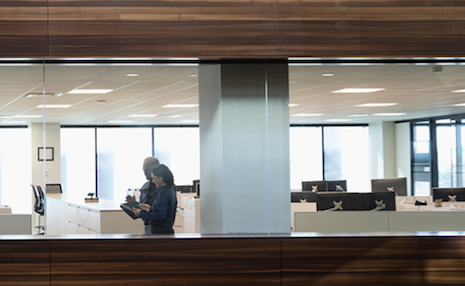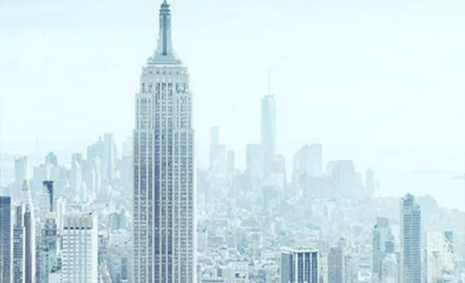- About
- Subscribe Now
- New York,
May 26, 2020

 Gartner report says companies should focus on employee experience during reopening. Image credit: Gartner
Gartner report says companies should focus on employee experience during reopening. Image credit: Gartner
As luxury brands begin to plan office reopenings, employee experiences should be at the center of plans to attract top-drawer talent back into the workplace.
Sixty-four percent of companies are prioritizing employee experience more highly now than before the coronavirus outbreak, according to a new report from Gartner.
“The return to the workplace is both an operational challenge and a human challenge,” said Elisabeth Joyce, vice president of advisory in the Gartner HR practice, Arlington, VA. “It will be an experience that is highly personalized and will need to reflect the needs of the individual and not just the company.
“Organizations will need to consider the various employee reactions to the return to the workplace decisions and create an approach that meets both business strategy and reflects the experience they want their employees to have,” she said.
Journey maps
While it might be a long time before people return to the office, companies should be forward thinking about what the future workplace looks like.
One-third of Gartner HR leaders said they do not yet know when they will be able to reopen closed facilities and start bringing employees back.
Additionally, 44 percent are planning a period of voluntary return to the office in which employees can choose to keep working from home if they like, according to the report.
The report recommends that HR leaders create “employee journey maps” to identify and manage moments that matter most to employees upon reentry. These moments can include their first day back and their first team meeting.
These journey maps are a visual representation of how and when an employee engages with the workplace, capturing the moments that matter to employees to make sure the organization disproportionately focuses on those points in time to inflect a positive experience where it matters most to the employee.
“Most organizations are looking at the journey of the return to the workplace from the point in time where an employee enters the physical workplace,” Ms. Joyce said. “Focusing time and effort to make sure employees who enter the physical workspace are safe.
“However, the experience is much broader than that,” she said. “The return to the workplace experience starts now with how organizations are engaging with employees while they are at home, how they are communicating with them, capturing and managing employee sentiment.
“Once we start the physical reopening, the experience will include how organizations prepare employees, from the time they leave their home until the time they return.”
 Gartner report suggests that companies should make employee journey maps for employees returning to work. Image credit: Gartner
Gartner report suggests that companies should make employee journey maps for employees returning to work. Image credit: Gartner
Reopening plans
First and foremost, companies need to consider health and safety before reopening.
As offices start to reopen, companies need to have plans for cleaning, supplies for personal hygiene, as well support for social distancing.
Additionally, companies should create a plan for re-closing if something goes wrong.
One of the biggest factors when reopening is making employees feel safe.
Companies not only need to establish safety measures, employees need to feel that these protocols are keeping them safe. HR will need to openly communicate what is being done on their behalf.
Employees should be able to decide whether or not they return to the office. HR teams should reach out to staffers to see how they feel about returning to the office and regularly take their temperature on these plans.
Companies should not force anyone to come back who is not comfortable returning to the workspace. Coercion could lead to employee churn and workers searching for better working conditions at another company.
If reopening occurs and employees begin to feel insecure about being there, then companies should consider this a catalyst to close the office again.
“The perception of safety is very personal and will not have a one-size-fits-all answer,” Ms. Joyce said. “For some, safety will only come when there is a vaccination that is largely available. For others, the reopening of countries and states will create this perception.
“Organizations that plan to reopen physical workspace before the end of the pandemic should follow health officials’ guidelines on how to appropriately clean space, mandate social distancing and encourage, if not require, face masks,” she said.
“This will not go far enough, however, to make many employees feel safe. Organizations should also create and communicate monitoring plans and have a strategy to adjust their approach to the return to the workplace.”
 Gartner says employees are concerned about the safety of returning to the workplace. Image credit: Gartner
Gartner says employees are concerned about the safety of returning to the workplace. Image credit: Gartner
Staggered comebacks
Luxury brands should stagger the return to work so as not to flood the office or retail environment on the first day. They should sequence the return by segment based on their roles, activities, skill sets and ability to work remotely.
HR can determine which employees have been productive working from home and bring them back later than those whose jobs rely on personal interactions.
These remote decisions should be made based on the work and not the worker.
If employees remain productive working remotely, then managers should be required to make a business case for returning a physical location.
“For those employees who can effectively work from home, the voluntary return will be a long-term option until the end of the pandemic,” Ms. Joyce said.
“Organizations should anticipate that the past few months and through the next many months will change the way that employees and consumers engage in any physical space,” she said.
“In the long run, the remote work discussion will give way to flexible work, changing how and when employees work and how they engage with consumers.”
Share your thoughts. Click here